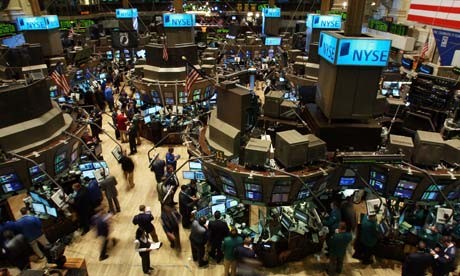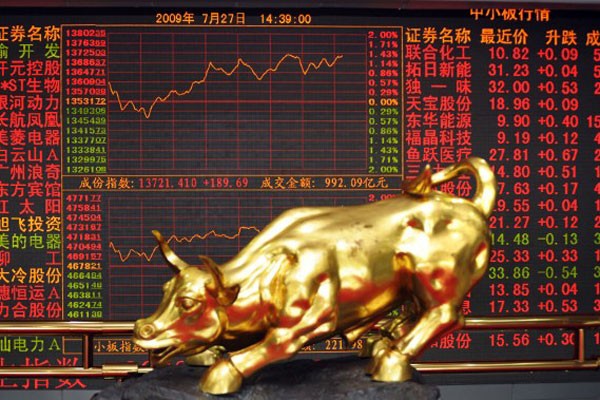Why Stock Exchanges Matter ()
Post on: 20 Май, 2015 No Comment

Once upon a time, not terribly long ago. I realized I didn’t know what set the major stock exchanges apart — or why we should care about their differences.
So I set out to learn more about the big ones: the New York Stock Exchange and the Nasdaq. Along the way, I ran into a few new names. It’s all here for your edification and mine. Let’s start with a rundown of the basics.
The big dog: NYSE
The Big Board has a history stretching all the way to 1792, yet the company has managed to remain nimble. By merging with Archipelago back in 2006, the NYSE itself went public and gained some new trading tricks. The time-honored specialist system — with a trading floor full of brokers yelling and signaling to each other — has now been complemented by a modern computerized trade system.
The 2007 merger with pan-European stock exchange Euronext got the NYSE started on the path to global operations as NYSE Euronext ( NYSE: NYX ). In October 2008, as Wall Street was ablaze with financial disaster. the NYSE closed on its buyout of the American Stock Exchange (AMEX) and runs it today as a specialized exchange for small-cap and ETF securities .
The NYSE is the largest U.S. stock exchange by total market value, with listed companies having a total market cap of $19.2 trillion as of July 2009, according to NYSE statistics. It’s set up to attract top-quality companies. To that end, the initial listing requirements are the toughest in the business, with high bars to clear in departments like recent earnings and cash flows, expected IPO value, and annual sales.
A couple of corporate-governance limitations add to the NYSE’s high-standards reputation. To qualify for an NYSE listing, a majority of a company’s board must be independent directors, and the entire compensation committee must be composed of outsiders. These requirements ensure that NYSE companies have more independent oversight of executive paychecks than do those of any other exchange. Equity-compensation plans, including stock-option grants, must be approved by a shareholder vote.
Joining this elite club isn’t cheap. Depending on the size of your company, it can cost as much as $250,000 to get your initial listing, with up to $500,000 in annual listing fees on top of that. It’s no wonder that NYSE-listed companies are big, with an average market cap of around $10 billion.
The NYSE exchange is home to some of the world’s largest companies, including ExxonMobil ( NYSE: XOM ). Wal-Mart ( NYSE: WMT ). and IBM ( NYSE: IBM ) .
The hot hand: Nasdaq
With its first trade facilitated in 1971, the Nasdaq doesn’t have quite the same illustrious past as the Big Board. Nevertheless, the cheeky little bulletin board grew up to be the first electronic stock exchange, and it soon attracted scores of technology stocks, along with other companies that either couldn’t meet the stringent NYSE minimums or didn’t want to pay those enormous fees.
The Nasdaq index was hit hard when the tech bubble burst. But the Nasdaq’s merger with the Archipelago-like Instinet. persistent nibbles at the London Stock Exchange, and a complicated buyout of Nordic exchange OMX make it clear that the Nasdaq OMX Group ( Nasdaq: NDAQ ) hasn’t lost its hunger for growth.
The total value of all Nasdaq issues is around $3.7 trillion right now. That’s small next to the NYSE, though it beats the larger exchange in the number of companies listed and the average number of shares traded every day. Investors still see Nasdaq stocks as potential growth opportunities; as such, the stocks here tend to be smaller than the average NYSE stock and attract more short-term trading than the stable behemoths of the value world do. Nowadays, though, it’s not that much easier to qualify for a Nasdaq listing; the Nasdaq’s minimum requirements for operating income and shareholder equity weed out many a hopeful lister.
While the Nasdaq’s fees are somewhat lower than the NYSE’s, they’re still not pocket change. Bring a check for between $100,000 and $150,000 if you’re introducing a large company to this market, and be prepared to shell out a maximum of $95,000 a year for continued listing. The biggest company here is Microsoft ( Nasdaq: MSFT ). with a market cap of around $235 billion as of October 2009.
No exchange at all: bulletin boards
If your company doesn’t qualify — or doesn’t want to qualify — for any of the major exchanges, there’s always the over-the-counter market or the Pink Sheets. Here be dragons for investors.
There is much less regulation regarding the quality of businesses that can trade on bulletin boards than for the NYSE and Nasdaq. The Pink Sheets body, Pink OTC Markets, does offer higher-tier listings such as the OTCQX marketplace, where companies like Swiss drug giant Roche Holdings have set up shop.

In addition, it’s harder to trade these shares efficiently. Liquidity is low to nonexistent; even large companies like Hennes & Mauritz. one of Europe’s largest retailers. or Publix Super Markets. a regional grocery chain with $24 billion in annual sales, can go for days without trading. That means it’s hard to get a fair price on your trades. Those same attributes make the unregulated markets ideal for penny-stock scams and other shady operations.
Tread lightly, if you go here at all .
Dark pools of liquidity
And then we have the so-called dark pools. Often operated by electronic exchanges or broker-dealers like Goldman Sachs ( NYSE: GS ). these entities don’t do their own listings but instead provide an alternate method for trading stocks listed elsewhere — like on the NYSE or Nasdaq exchanges.
The dark pools don’t mean much to us individual investors, but they move a lot of money through channels over which the SEC has little oversight, and they may give an edge to investors with lots of cash or connections. Although dark pools do have to report their trades to a reporting facility, these private exchanges are so isolated and opaque that even the industry itself can’t agree on how to report trading volumes.
The government is currently looking into ways to increase regulation and oversight of these huge money flows, so stay tuned. In the meantime, just be aware of their existence.
As you can see, despite their long history, stock exchanges are seeing a lot of innovation lately. Just as discount brokers brought a revolution in how investors buy and sell stocks, so too could new features from stock exchanges change the way institutions and individuals alike invest in the stock market.
Now that you’ve seen how the market is organized, why not take the next step and learn how to use the information? Our Motley Fool Stock Advisor newsletter is jam-packed with useful information, all of which you can see free with a 30-day trial.
Fool contributor Anders Bylund holds no position in any of the companies discussed here. NYSE Euronext is a Motley Fool Rule Breakers pick. Microsoft, Nasdaq OMX Group, and Wal-Mart are Motley Fool Inside Value selections. The Fool has written puts on Nasdaq OMX Group. Try any of our Foolish newsletters today, free for 30 days . You can check out Anders’ holdings and a concise bio if you like, and The Motley Fool is investors writing for investors .














